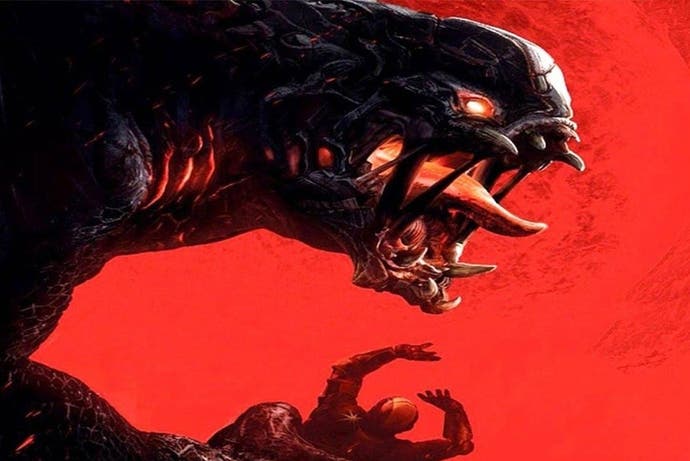Digital Foundry: Hands-on with Evolve
CryEngine compared for the first time across PS4, Xbox One and PC.
In gameplay terms, Evolve is shaping up to be one of most enjoyable online team-based experiences we've played in quite some time. However, from a technical standpoint, what draws us to this title is the fact that it's the first triple-A multi-platform rollout for Crytek's stunning CryEngine across PS4, PC and Xbox One. Unfortunately, our initial excitement was tempered somewhat by the somewhat mundane - but extremely annoying - networking problems we encountered.
Connection issues, excessively slow matchmaking, and the appearance of occasional game-breaking bugs were frequent bugbears across all platforms during our test, putting a downer on the experience. Indeed, on the opening night, we spent around two hours with the game on the Xbox One and only managed to get a single match under our belt. In comparison, the PC version gave us a little less trouble after an update was installed, although we still encountered connection issues and matches where our character model and abilities failed to load when playing as either monster available in the alpha - the Goliath and Kraken. Things improved for us as the alpha phase progressed, but the problems were never too far away.
The situation didn't improve on PlayStation 4. Due to unforeseen incompatibilities with the recent 2.0 firmware, the PS4 alpha was delayed by a few days while an update was quickly developed - the game would crash and boot players back to the PS4 dashboard when connecting to servers or searching for a match. But even after the patch was deployed the matchmaking and unstable connections continued to a much greater extent compared to on other platforms - we only experienced between eight gameplay sessions across a 12 hour period, with most of the time spent stuck in menu screens or reloading the game after it crashed.
All of this aggravation doesn't make for a great introduction to Evolve, and that's a shame. Once we got past these problems and immersed ourselves in the gameplay, we found a highly entertaining experience, offering up a very different approach to the standard team-based shooter. And we finally got what we wanted from the alpha - a realistic appraisal of CryEngine's capabilities across both of the new wave consoles, and an appreciation of how they compare to the high-end PC experience. It's clear that the technology is put to good use in realising detailed, multi-level environments featuring a mixture of natural rocky landscapes and industrial man-made structures that showcase a range of accomplished effects, including dynamic lighting and weather (with varying degrees of rain and snow), realistic surface shaders, and full water physics. Image quality in particular is pretty impressive on both consoles, boasting clean edges for much of the scenery and only faltering when dealing with small sub-pixel elements in the distance.
Alternative comparisons:
The smooth look present throughout most of Evolve extends to both consoles, although fine details appear a little fuzzier on the Xbox One game, suggesting an upscaled framebuffer. Pixel counting puts the Xbox One version at 900p while PS4 owners are given a native 1080p presentation. The drop in pixel precision can be seen on smaller elements of the scene, such as wires, railings, and small pipe work, but thankfully the low contrast nature of the game and use of accomplished anti-aliasing helps to partially gloss over the effects of the upscaling during gameplay in areas where these elements aren't particularly abundant. Both consoles operate with an AA solution that closely resembles the PC version running with SMAA 1X enabled, but free of any temporal ghosting.
For the PC version we select a native 1080p resolution to match the PS4 game and ramp up all graphical settings as high as they will go. In this case we are limited to the very high preset in the alpha (the equivalent to ultra in CryEngine titles), although we can still enable advanced rendering features, such as tessellation, which we naturally choose to do. In terms of anti-aliasing Nvidia's TXAA 4x provides the cleanest image quality available, so we selected this for our PC comparison assets. The technique provides a super-sampled picture that almost completely eliminates all jaggies (though some mild sub-pixel issues remain), although this does come at a cost to raw texture clarity - the artwork gets mildly smoothed over when using TXAA.
SMAA (sub-pixel morphological anti-aliasing) usually provides a decent alternative for those looking to gain decent image quality without sacrificing performance. Evolve provides 1x, 1Tx, 2Tx, and 2x variants, with the latter three options using a temporal frame blending component to increase the level of coverage on offer. Unfortunately, using anything other than SMAA 1X results in noticeable ghosting whenever there is movement on screen making the more advanced edge smoothing options pretty redundant. This doesn't happen using the same option in Crysis 3, so we suspect that this is a bug that needs resolving in the final version of the game. On the plus side image quality appears to remain relatively clean even when using the old FXAA technology, so that comes across as a decent option for those that need a low cost solution to tackling the dreaded jaggies.
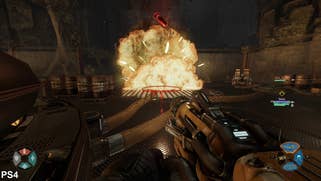


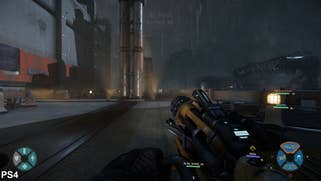




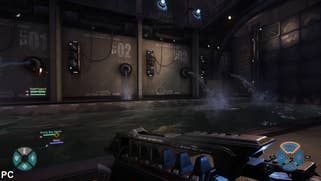
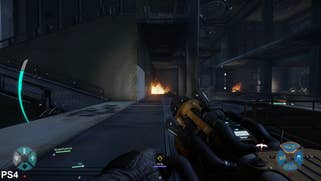


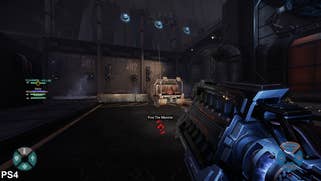
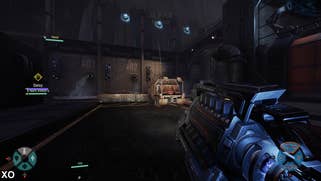
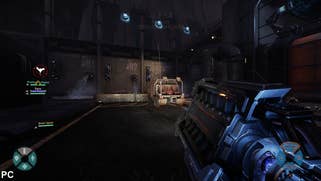
Curiously, both PS4 and Xbox One versions of Evolve operate using the equivalent of the top-end very high settings on PC: the core artwork is a match across all three versions of the game, although there are a few variances with regards to texture streaming between platforms. As it stands mip-map transitions tend to occur a little later on the PS4 in many instances, which leads to ground surfaces appearing blurrier as higher quality artwork continues to load in - metal railings in particular lose definition from just a few feet away. For the most part the Xbox One and PC versions stream assets out at similar speeds, but occasionally Microsoft's console takes the lead, though moving to a faster hard drive or SSD will doubtless make up the difference. Draw distances on the PC reveal slightly more detail on small objects, suggesting small differences in level of detail settings (LOD) between console and computer.
In other areas, effects work looks mostly identical across all three platforms. The smooth contours of the pipe-work on some characters' weapons suggest that tessellation is correct and present on consoles, while particles, fire, and other alpha effects run at full resolution on all versions. Fully interactive water caustics are present too, with the body of water reacting to bullets and other objects as they pierce the surface. Looking closely, the only elements that are missing on console are the environment reflections that are found across water and wet surfaces on the PC version. However, light sources are reflected on shiny objects on PS4 and Xbox One, which still adds some extra sparkle to gunfights and areas that are more brightly illuminated.
Other differences can be attributed to the use of a dynamic weather system, coating the environments in layers of water and snow according to the severity of the conditions. Surfaces become shiny and wet when it begins to rain, but during torrential downpours, pools of water form across the ground and the environment takes on a completely drenched look. The appearance of light shafts is also determined by cloud coverage and changes in the skyline, so while the effect is absent in our PC and Xbox One shots, it's definitely present on all formats.



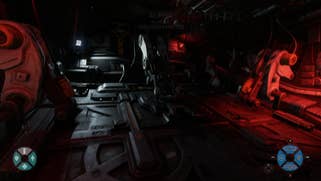
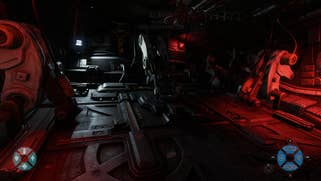
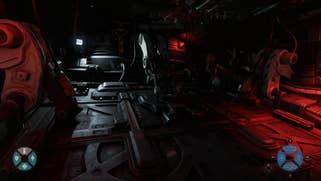
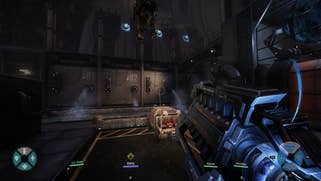

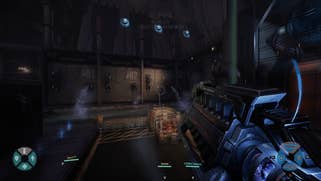
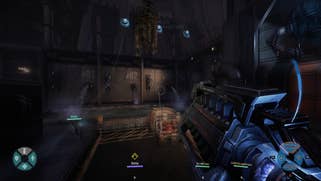
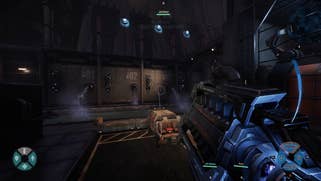


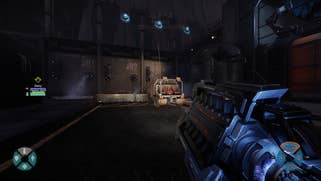
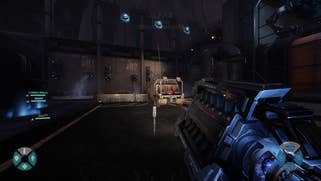
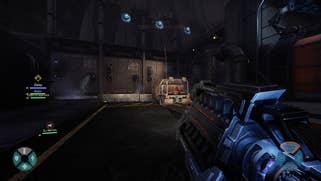

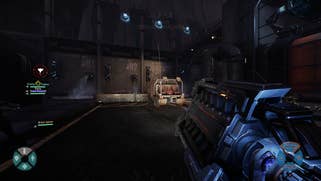
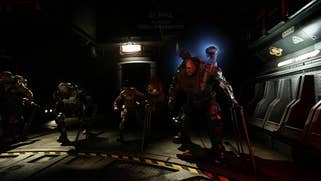
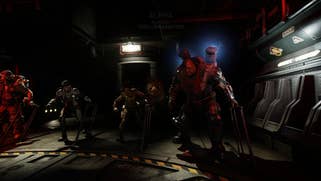

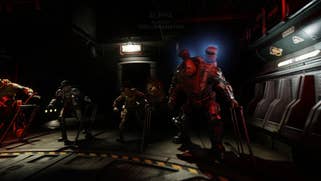
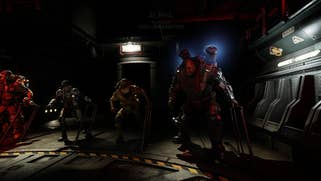

Beyond looking rather splendid, the shifting visual changes created by the random nature of the dynamic weather also help to enhance the core gameplay. When playing as one of the two monsters -Goliath or Kraken - available in the alpha, it's easier to sneak past a group of hunters under the cover of a stormy barrage of rain and snow, than it is to try and creep by in clearer conditions. Meanwhile, the real-time lighting model also sees muzzle flashes from weapons fire, explosions, and the moonlight reflecting from various surfaces. This helps to enhance the game's moody atmosphere at night, while ramping up the intensity of combat against a fully powered-up stage three beast.
Taking a look at performance on Xbox One game, Evolve sticks closely to the 30fps target outside of busy scenes where liberal amounts of alpha and lighting effects are deployed. The brief periods of stutter found during gameplay are distracting, but thankfully only last a few seconds and don't occur very often. For the most part, exploration and small firefights against the less intimidating local wildlife appear smooth and feel pretty satisfying for a 30fps game - controller response feels crisp when performance is rock solid.
Evolve sees a group of four players coming together to track and battle it out with a player-controlled monster in a war of survival, and this proves more demanding, with variable frame-rates between the high and low twenties depending on the intensity of the scene. The team-based aspect almost always ensures that encounters against a Goliath or Kraken are illuminated with a barrage of particles and alpha effects as explosive weaponry is liberally deployed, while the monsters retaliate with fierce projectile attacks. In these sequences, performance is impacted, causing pockets of judder to occur on-screen, alongside spikes in controller response that makes aiming feel heavy and briefly unpredictable. That said, the engine manages to recover pretty quickly and the more excessive deviations from the intended 30fps standard don't hang around for too long, but optimisation here is needed.
Moving onto PS4, Evolve gains an advantage from delivering sharper native 1080p presentation compared to the Xbox One game, but right now this has some drawbacks when it comes down to performance in demanding scenes: frame-rates simply aren't as stable on Sony's console when the engine is under load, and this leads to more noticeable stuttering on the platform compared to Xbox One.
The main issue here is that drops in performance are sustained for longer periods, and frame-rates often drop off more sharply too, which visibly draws attention to the variances in motion handling and controller response. Turns of the analogue stick feel heavy under these conditions and this makes it difficult to aim under pressure with a good degree of precision - something that can potentially turn the tide of the match. With Evolve currently in alpha mode, the developer must surely be aware of this issue and we hope to see it fixed in the final game.
Away from intense combat scenes though, Evolve holds up pretty solidly to the 30fps target on the PS4. Aside from the beginning of a match where performance is visibly compromised as players parachute down to ground from air, exploration of the game's detailed maps feels fairly smooth and responsive, while smaller battles against less intimidating enemies usually have no impact on frame-rates. Occasionally, we are met with a few unexpected dips in fluidity, which prove distracting when they occur, but these are more of a minor nitpick than a real concern.
While the 30fps update on consoles manages to deliver crisp and highly responsive controls for that frame-rate, the PC version quickly re-affirms that gameplay at 60fps is still the standard to beat. The increase in temporal resolution naturally enhances the look of visuals, making intricate touches in the environments stand out more, but it also has more useful effects that improve gameplay. Fast turns of the camera appear smooth allowing for easier tracking of the monster and other players in heated encounters, while the controls are given an additional boost in speed and precision. We found that a test rig consisting of a Core i5 3570 paired with a GTX 780 could easily sustain 1080p60 on the very high preset, with SMAA T2x engaged, though TXAA 4x introduced some mild stutter. We really hope that the borked SMAA presentation is fully resolved in the final PC release.
Overall, from what we've played so far, Evolve is shaping up to be a promising multi-player shooter across all platforms, although it's clear that the netcode and matchmaking elements need a lot of work at this point before they are stable enough to provide a stress-free online experience. Of course, we should stress again that Evolve was only in an alpha stage when we played it. The aim of the recent public test was more about isolating and discovering potential technical problems as opposed to a playable demo for the final product. At this stage Evolve is in a state of flux, and we really hope that the significant online issues present will be resolved in time for the upcoming beta, which is apparently more focused on getting player feedback on balance problems and other gameplay related quirks.
The good news is that from a rendering perspective at least, Evolve demonstrates that CryEngine has got what it takes to compete as a state-of-the-art multi-platform engine. While we've seen the tech produce stunning results on Xbox One and PC, the Evolve alpha represents our first look at the middleware operating on PS4, and while there are clearly some optimisation issues to resolve, the technology acquits itself well, boding well for its utilisation on Deep Silver's upcoming new-gen Homefront.
